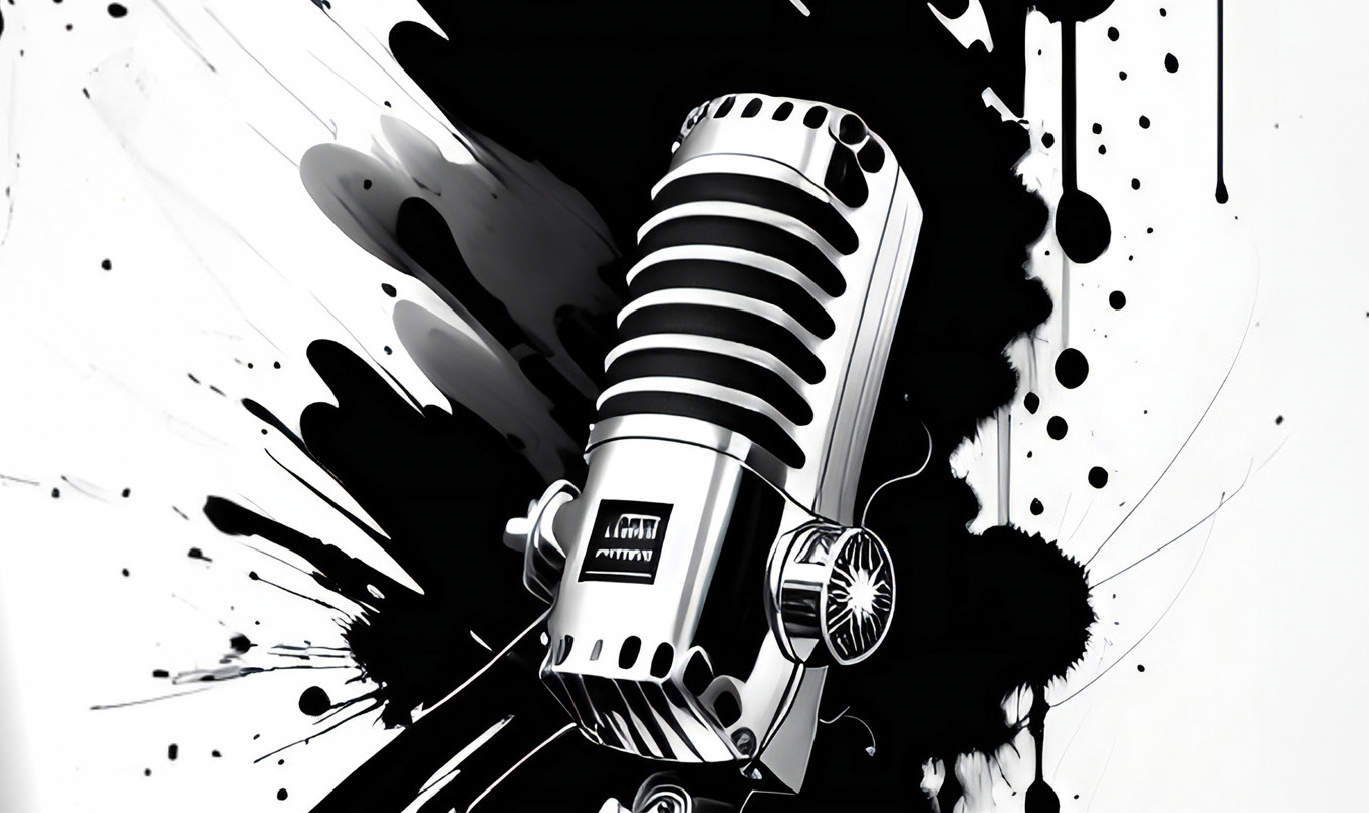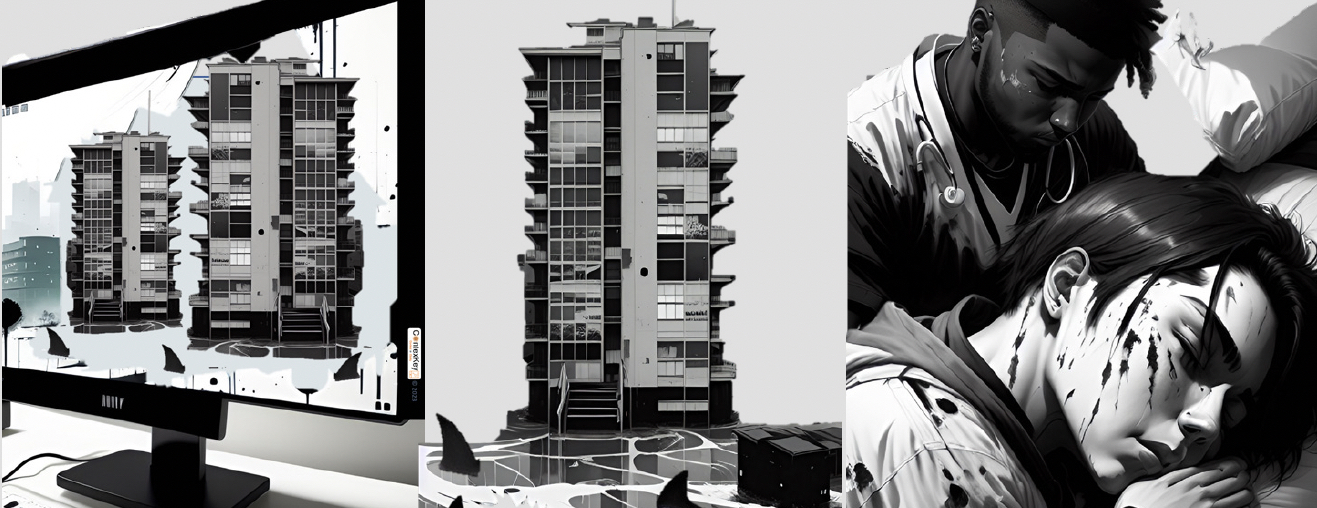
Since I entered this arena in 2015, the debate between Art and Music produced in furtherance of a gang mentality has dominated the discussion. However, what remains unexplored is what lies beneath the surface of this seemingly glossy entertainment facade.
For those unfamiliar with the subject, Drill is a genre of music, like Jazz, Funk, and Dance. It emerged as a sub-genre of Hip-Hop in Chicago, America, in 2012, and quickly spread to South London shortly after.
The genre's defining characteristics include unapologetically raw, highly confrontational, and provocative lyrics that often vividly depict violence involving weapons and other forms of criminal activity. While Drill has faced criticism for glorifying illegal actions, many of its fans view it as an authentic expression of the harsh realities experienced in disadvantaged communities.
Since it arrived in Brixton, South London, around 2014, the genre has undergone significant evolution. Aspiring artists now find themselves pursued by music label executives who offer substantial sums of money for their artistic talent. The life-changing opportunities and experiences are far beyond the reach of individuals from the very communities these aspiring artists originate from.
Discussions within the industry predominantly revolve around life-changing opportunities, achieving chart success, and improving one's overall existence. However, this is merely the ‘front of house’ perspective, only scratching the surface of a much deeper issue.
The focus of my policing career revolved around what lies beneath this surface, although it didn't begin with the music—it began on the streets.
Shepherds Bush. Where it started…
Let's go back to 2014. I was a fresh-faced Metropolitan Police Officer stationed in West London, specializing in neighbourhood policing. It was an exhilarating experience, filled with memorable moments. However, alongside those fond memories, I encountered numerous heart-wrenching incidents. The tragic loss of life, and life-altering injuries inflicted upon the youths I deeply cared for still haunts me to this day.
Witnessing squandered potential these young individuals was particularly challenging for me, and coming to terms with it has been an ongoing process. I was a highly proactive police officer, always eager to be out in the community, confronting crime head-on. My ability to remember faces served me well. I was formerly a Proactive
Intelligence CCTV Operator, which made my expertise sought-after by many teams and operations.
When I wasn't patrolling on my bike, I would often find myself being driven around in an unmarked car or coordinating operations from the Council's CCTV Control Room alongside dedicated and driven professionals. Around 2015, I truly began to feel a sense of belonging in my community. I became attuned to its unique rhythm. However, it was around this time that I started sensing shifts in the atmosphere that would periodically descend upon the area.
Perhaps it was my growing familiarity that allowed me to perceive these changes. Or maybe the climate had already taken hold, but like many others, I had been oblivious to it. I could sense a certain tension in the air when I interacted with the community, and even through the lens of a CCTV camera.
The behaviour of the youths I regularly engaged with underwent a noticeable transformation. They would gather along the walls of their ‘Front Line’, a row of shops they frequented, adopting a vigilant stance. These periods of unease often preceded or followed violent incidents, although not exclusively. Initially, I couldn't fully comprehend it; the tension was selective, affecting some individuals more visibly than others.
It felt as though sharks were circling their small island of refuge, fully aware that these sharks had learned to walk. I have witnessed large-scale fights with weapons, stabbings, firearm discharges, drug-related kidnappings, gang-related ‘Ride Outs’ , and ‘Lurkings’. I have also reviewed countless cases post-incident.
Frequently, I questioned how a young person I had felt completely at ease with, someone I had seen engaging in positive social interactions, could suddenly become the suspect in extremely violent offences. Refusing to accept that it was solely due to my naivety, I embarked on a quest for answers to my lingering questions.
“The beat of a butterfly’s wing can alter the course of a tornado…” - Chaos Theory
The atmospheric shifts I had grown accustomed to served as early warning signals for an impending ‘tornado’. The impact of which began to be felt in West London around 2015. It would often touch down in Shepherds Bush after dark, then make its way to neighbouring Ladbroke Grove, and vice versa. I became familiar with these atmospheric changes and bore witness to the aftermath they left behind each time they struck.
Large groups of hooded figures would descend upon both areas, leaving young individuals fighting for their lives. Determined to understand its trajectory, I delved into the online space. It was there that I truly grasped the immense power of the butterfly's wingbeat.
But what butterfly am I referring to? It is the manipulation of music and social media, fuelling a self-destructive cycle of ‘us versus them’ one-upmanship. Even the slightest flutter of a cruel lyric or a bullying social media post can unleash a tornado that robs lives, inflicts trauma, and perpetuates a climate of fear.
Unfortunately, this chaos is often tolerated and disguised as a pro-social endeavour. Much-needed discussions are clouded by dominant arguments about Free Speech, Artistic Expression, and the demonization of our youth and communities. What is often overlooked is the undeniable power of this chaos. It can whip up an atmosphere so unforgiving that it can alter a young person's life trajectory, cloud their judgment, and impede their ability to make sound decisions.
Hats and lenses…
Throughout my career as an Officer and an independent Expert Witness in this field, I have been privileged to gain valuable insights into the nature of violence. One of the most striking observations I have made is that many young individuals in our communities wear multiple ‘hats’. They can be avid sports enthusiasts, regular attendees of religious settings, caring siblings, sons or daughters, and aspiring music artists, all at the same time.
Our young people navigate teenage years by adopting varying personas. This is not a new phenomenon. All of us naturally adopt different personas depending on the context - a ‘work version’, a ‘social circle version’, and a ‘family version’ of ourselves.
One persona that some of our young people wear is that of a gang affiliate or associate. Importantly, this does not negate their other identities; it can coexist with them. The adoption of this persona often stems from pro-social connections, such as childhood friendships, school acquaintances, or neighbours. Unfortunately, in many cases, this persona emerges from the exploitation of social deprivation, fear, and an innate desire to survive.

Sometimes, it is inherited from siblings, parents, or extended family members. In essence, this is not fundamentally different from pro-social identities.
However, embracing the gang persona comes with a significant price. In today's online world, adopting such is displayed prominently, akin to an illuminated billboard. It acts as a beacon, attracting like-minded individuals. Combined with the pursuit of the historical conventions of an unapologetically raw music genre, our youth often find themselves in an arena where ‘relevance’ and ‘popularity’ are measured on a scale of truth, exaggeration, and ‘cap’ - slang for a false statement. Falsehoods or exaggerated claims about their lives are quickly exposed and scrutinized online. The comment section, likes, dislikes, views, and follows carry great weight and can cause young people to struggle to maintain their footing on a slippery slope toward a self-destructive cycle where art imitates life. The toxic fog emanating from this persona impacts those who associate with them, the communities they belong to, and the places they frequent.
There is no winning when winning is built on the foundations of another’s misery and trauma.
Those who seek out these individuals to test or challenge them follow the trail of lingering fog. The personas of the avid sportsperson, caring sibling, and aspiring musician are there, but faded. Emanating through the haze is the beacon of the victim’s gang persona. It is this persona that they are targeting. The aggressor is led by the weight of the same persona which pushes all consciousness of the other pro-social personas, out of their mind, as they zone in. It is not a pro-social persona they adopt when they exit a stolen vehicle armed with a knife with the intent to harm another.
The persona of the gang affiliate or associate is a burden. It distorts their perception, preventing them from seeing the other ‘hats’ their intended targets wear. It also erodes their sense of consequence, empathy, and judgment.
The person standing before them is believed to be the one who has previously hurt them or has taunted and belittled them in the virtual realm. Their tunnel vision excludes mindfulness, and mistakes often occur in identifying the intended target. However, these errors go unnoticed as the person in their sight instinctively flees to preserve their safety. The fleeing youth unwittingly reinforces the assailant's misguided belief.
Unfortunately, reality often dawns too late, after irreparable damage has been done.
“Not Life Changing / Life-threatening…”
In the aftermath of a violent incident, when the victim is in the care of our exceptional National Health Service, there is one phrase that brings a sense of relief: ‘Not life-threatening, not life-changing’. While this sounds positive, it has always felt incomplete to me.
This assessment only considers the physical well-being of the victim. What about the potential mental trauma, and the long-term effects on their mental health? I have witnessed individuals undergo profound changes after experiencing violence. Victims of knife crime can turn into carriers of knives themselves. Once carefree and cheerful, these youths become hyper-aroused, paranoid, and barely recognizable due to the pervasive climate of fear that surrounds them.
Naturally, the focus is rightly placed on the victims of violence, and it often stirs controversy when I bring the perpetrators into the conversation. However, as humans, we have evolved to such an extent that raw violence leaves a lasting impact on both the victim and the perpetrator.
It does not matter how strongly some of our youth may believe they are ‘built for this life’; they are not immune to the devastating psychological effects of knife crime. The up-close brutality of such acts will undoubtedly affect the mental well-being of the individuals wielding the weapons, whether they acknowledge it or not.
Unmanaged or poorly managed trauma experienced by both victims and perpetrators has far-reaching consequences for the wider community. It ripples through society, affecting not only those directly involved but also those who live in fear and witness the aftermath of these acts. The impact is felt on multiple levels, and it is crucial to address and manage the psychological consequences alongside the physical injuries to foster healing and prevent further harm.
The line to be drawn…
There is a clear distinction that needs to be made between art that reflects the artist's experience of society and malicious manipulation of art to promote self-destructive, violent, and potentially fatal mentalities. Lyrics or social media posts that glorify near-fatal violence or maliciously taunt those who survive the victims of fatal violence, step over the line of historical conventions of an unapologetically raw music genre. They exploit hyper-local and hyper-personal contexts to target shame and trauma receptors, causing significant harm to the intended recipients, and roll the dice for a physical retaliatory reaction.
To truly understand the impact of such content, we must put ourselves in the shoes of the victims of brutal violence or those who mourn the loss of young lives taken by violence. Empathy is essential in recognizing the difference between artistic expression and harmful messages that perpetuate violence, trauma and shame.
Indeed, as an expert witness, your role is to provide the court with valuable insights and a comprehensive understanding of the multi-layered and complex reality surrounding a case. This includes shedding light on the intersection of the online space and historic violent feuds, as it can significantly impact the motivations and circumstances of the defendant.
It is important to recognize that individuals who find themselves in the dock have historically worn multiple ‘hats’, representing different aspects of their lives. They may have experienced adverse childhood experiences and adverse community environments, which contribute to their overall circumstances. Their online and musical presence can be vital explanatory evidence and may be a focal point in the trial. It is essential, however, to view it as just one version of the individual that they adopt daily.
By providing the court with a nuanced understanding of the defendant's various personas and the influences that have shaped their actions, you contribute to a more comprehensive assessment of their motivations and circumstances. This aids the court in making a fair and informed judgment based on a holistic understanding of the individual before them.
It is important to recognize that those who commit violent acts often do so as a result of adopting belief systems they hold dear at that time. However, we also have a generation of youths who have become desensitized to brutal violence, pursuing it as a form of entertainment as a spectator or participant. While we may seek to understand their motivations, it is crucial to address the underlying factors that contribute to such desensitization and challenge the adoption of harmful beliefs.
Working in this field takes a toll on those dedicated to youth safety, leaving traces of every contact with trauma. The commitment to protecting young lives persists despite the judgmental labels that have been placed upon my colleagues and me. As professionals, we understand the weight of labels and strive to provide context and understanding rather than perpetuate stereotypes.
This article is my rallying cry for change, to create a breeze that can steer our youth away from the destructive path they may be following.
Amidst the tangled threads of the web, the butterfly effect unfolds. Cruel lyrics intertwined with hyperlocal context, amplified by the reach of social media. This dangerous dance blurs the lines between art and life, with words bleeding into action. – ContexKey 2023

Michael Railton
Director, ContexKey
Expert Witness & Training Consultancy Urban Street Gangs, Slang & the Malicious Manipulation of the Online Space
